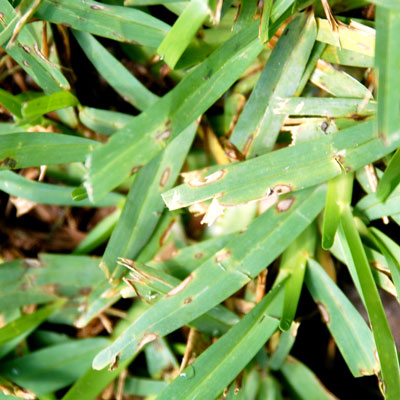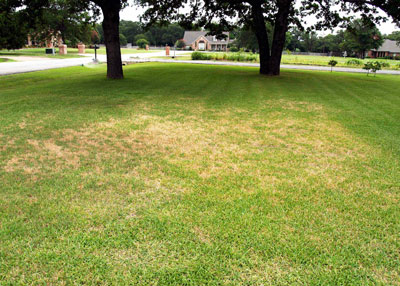Summertime St. Augustine Woes
We see troubles in St. Augustine turf in the summer, but that’s not surprising. Those of us who prefer St. Augustine will readily admit that hardly a season goes by without it showing some kind of issue. Here are two that are common in the hottest weather, along with tips on differentiating them.

Gray leaf spot is recognizable in St. Augustine turf.
Gray Leaf Spot
Symptoms: Affected grass looks yellowed, even to the point of seeming to be crying out for nitrogen. (Don’t do it!) You will see gray/brown, diamond-shaped lesions on the blades and runners of the grass. They’re your best means of confirming its presence.
Your remedies: Suspend feeding between mid-June and early September. Apply an approved turf fungicide according to the directions on the product’s label. The grass should begin to respond within 7-10 days. When you do resume feeding, always use the highest quality fertilizer with half or more of its nitrogen in slow-release form.

Chinch bug damage in St. Augustine turf in summer.
Chinch Bugs
Symptoms: Hot, sunny areas (always) of your St. Augustine lawn will appear dry, but they won’t respond to watering. If you get down on your hands and knees and part the interface between dead and dying grass, you may see BB-sized black insects with white diamonds on their backs. You may even see smaller red nymphs moving about in the same area.
Your remedies: There are several good turf insecticides that are labeled to control chinch bugs. Treat at first proof of their presence, before they actually kill the grass in the worst-affected parts of the yard. Next year, watch those same places. They generally return to the same hot, dry parts of the lawn.
(See “St. Augustine Diagnostics,” another post here relating to other problems this grass may have in Texas.)

